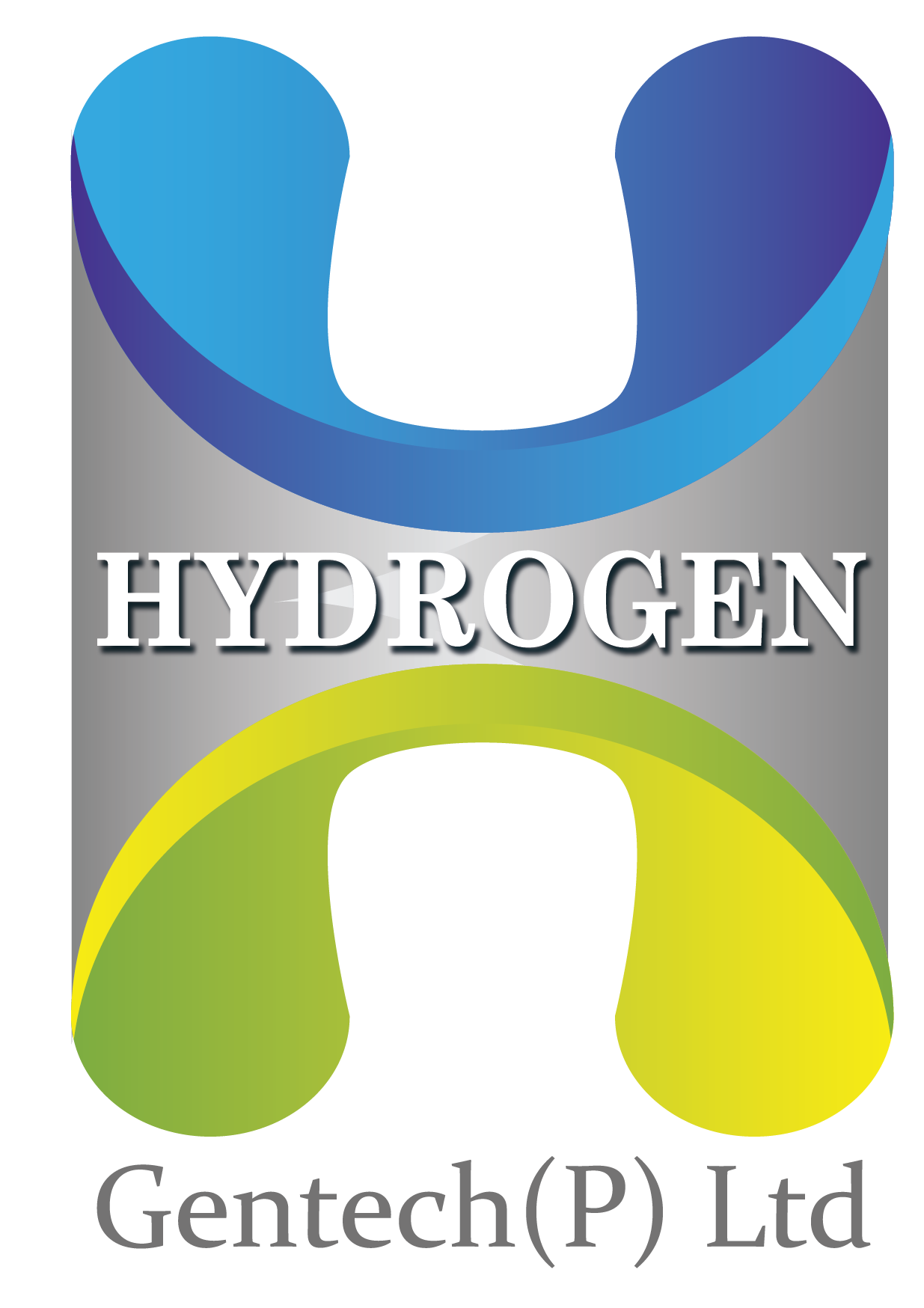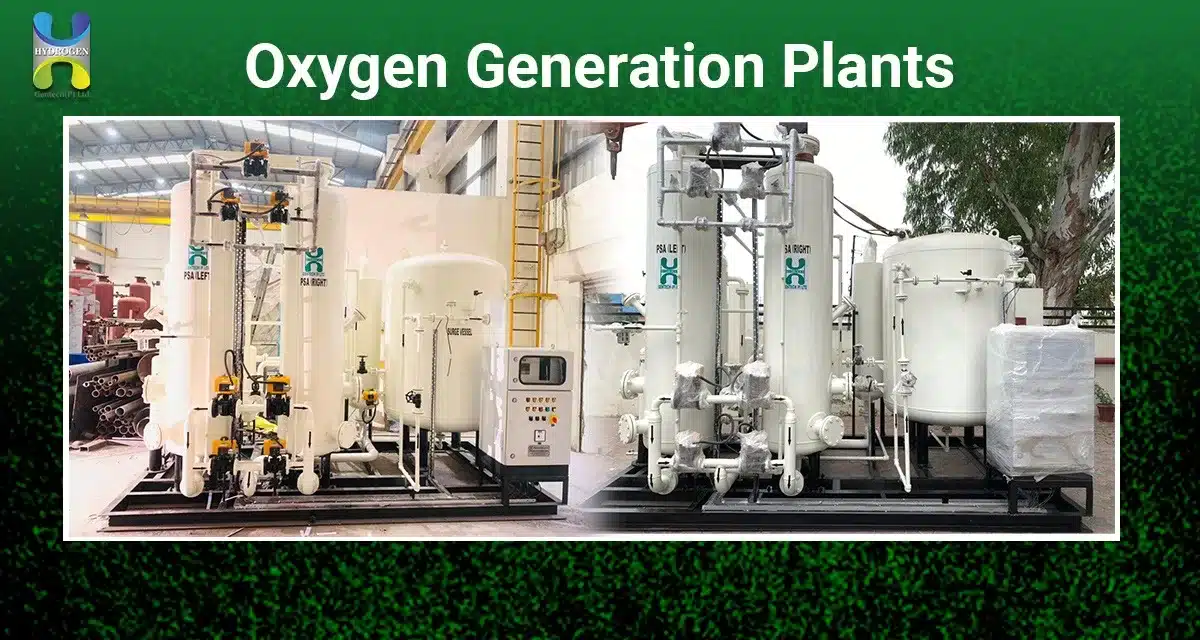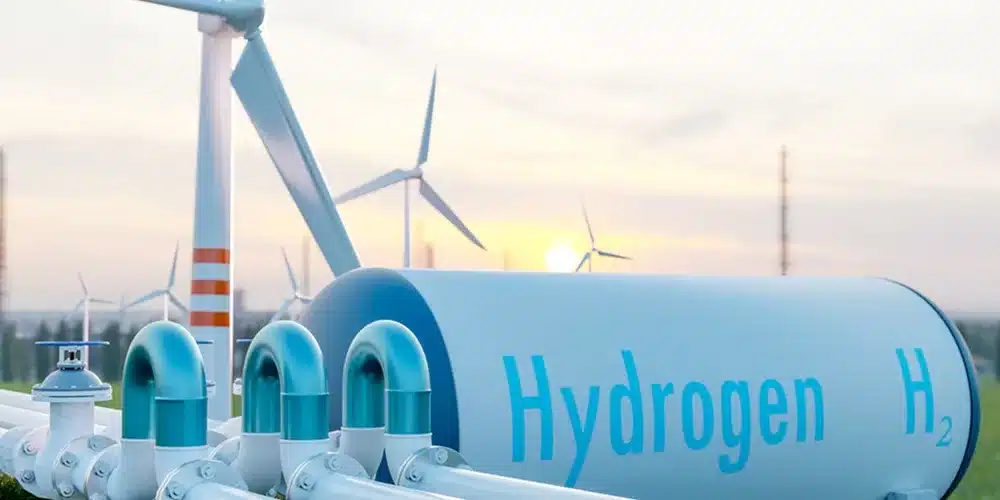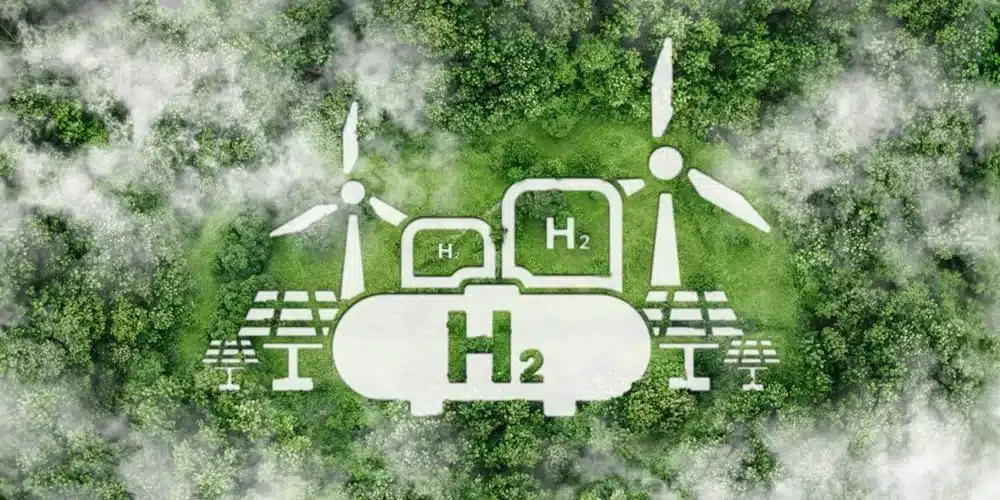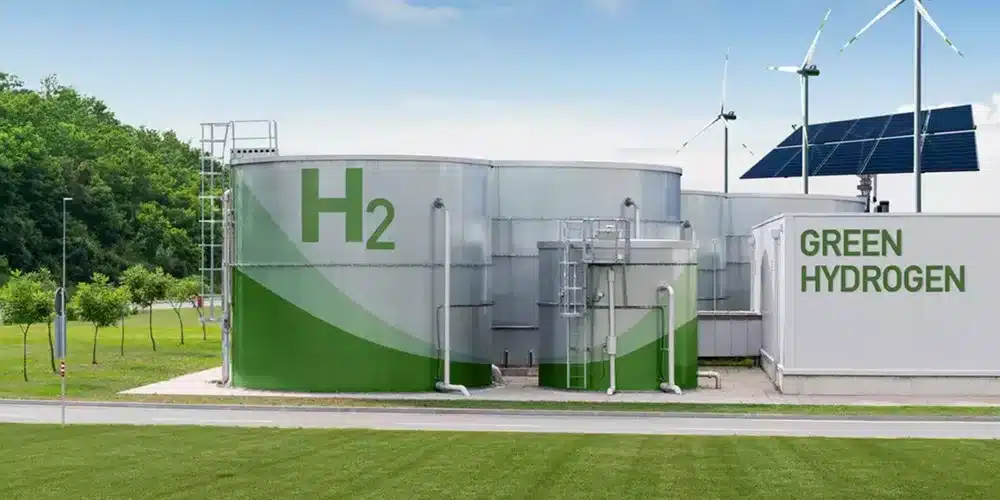The global energy transition is accelerating, and hydrogen has emerged as one of the most promising vectors for deep decarbonization. Among the different hydrogen production methods, water electrolysis for green hydrogen is gaining the most traction. It enables the production of hydrogen by splitting water into hydrogen and oxygen using electricity derived from renewable energy sources such as solar, wind, and hydropower.
Unlike conventional hydrogen production, which relies on natural gas reforming or coal gasification and emits significant amounts of CO₂, electrolysis powered by renewables is entirely carbon-free. This makes it a cornerstone technology for achieving net-zero targets, decarbonizing heavy industry, and creating new pathways for clean mobility.
This guide explains how water electrolysis works, the main electrolyzer technologies, system design considerations, economics, policy drivers, and the future roadmap for green hydrogen. It is structured to provide a complete, SEO-friendly resource for anyone researching or evaluating this field.
What is Water Electrolysis?
Water electrolysis is a process that splits water molecules (H₂O) into hydrogen (H₂) and oxygen (O₂) using an electric current. When powered by renewable energy, the hydrogen produced is classified as green hydrogen.
Why it matters:
- It produces zero carbon emissions at the point of generation.
- Hydrogen serves as a versatile fuel, feedstock, and energy carrier.
- It enables decarbonization of sectors that cannot be electrified directly.
Process flow in simple terms:
Electricity → Electrolyzer → Hydrogen + Oxygen → Conditioning → Storage/Use
In practice, renewable electricity is converted into direct current (DC), passed through an electrolyzer, and splits purified water into hydrogen and oxygen gases. The hydrogen is then dried, purified, compressed, and stored or transported for downstream applications, while oxygen can be vented or captured for industrial use.
How Does Water Electrolysis Work?
Electrolysis is an electrochemical reaction composed of two half-reactions:
At the anode (positive electrode):
2H₂O → O₂ + 4H⁺ + 4e⁻
At the cathode (negative electrode):
4H⁺ + 4e⁻ → 2H₂
Overall reaction:
2H₂O → 2H₂ + O₂
Producing 1 kilogram of hydrogen requires about 39 kWh of electricity thermodynamically (based on lower heating value, LHV). However, due to inefficiencies in the electrolyzer and supporting systems, the actual requirement is 50–55 kWh/kg H₂.
Key components of the process include:
- Power electronics: Convert AC grid power into DC current.
- Electrolyzer stack: Where the water splitting occurs.
- Balance of Plant (BOP): Includes cooling, gas purification, compression, drying, and storage.
- Electrolysis efficiency, lifetime, and integration flexibility depend on the type of electrolyzer technology used.
Types of Electrolyzer Technologies
Several electrolyzer designs exist, each with different chemistries, costs, and maturity levels. The four main types are Alkaline (AEL), Proton Exchange Membrane (PEM), Anion Exchange Membrane (AEM), and Solid Oxide (SOEC).
Alkaline Electrolyzers (AEL)
Design: Uses a liquid alkaline electrolyte such as potassium hydroxide (KOH) or sodium hydroxide (NaOH). A diaphragm separates hydrogen and oxygen streams.
Advantages:
- Proven, mature, and commercially available at large scales.
- Lower capital cost compared to other technologies.
- Long operating lifetime.
Limitations:
- Larger footprint.
- Slower response to variable power inputs.
- Limited ability to operate efficiently under partial load.
Best suited for: Steady industrial hydrogen demand, integration with baseload renewables, and projects with large footprints.
Proton Exchange Membrane (PEM) Electrolyzers
Design: Uses a solid polymer membrane and precious metal catalysts such as platinum and iridium.
Advantages:
- Compact footprint and high current density.
- Fast ramping ability, ideal for solar and wind integration.
- Can operate at differential pressures, reducing compression costs.
Limitations:
- High capex due to platinum-group catalysts.
- Requires ultrapure water to avoid contamination.
- Care needed to manage oxygen crossover.
Best suited for: Green hydrogen fueling stations, grid balancing, and projects linked to variable renewables.
Anion Exchange Membrane (AEM) Electrolyzers
Design: Emerging hybrid concept combining alkaline chemistry with membrane technology.
Advantages:
- Potential to reduce costs by avoiding precious metal catalysts.
- Operates in alkaline environment.
Limitations:
- Still in early R&D and pilot phases.
- Durability and long-term stability remain challenges.
Best suited for: Pilot projects, early adopters testing low-cost electrolyzer solutions.
Solid Oxide Electrolyzers (SOEC)
Design: Operates at high temperatures (600–850°C) and uses steam as the feed.
Advantages:
- Very high efficiency, especially when integrated with waste heat.
- Ability to co-electrolyze H₂O and CO₂ to produce syngas.
Limitations:
- Materials challenges at high temperatures.
- Sensitive to thermal cycling.
Best suited for: Industrial facilities with high-grade heat and carbon capture integration.
System Architecture and Balance of Plant
An electrolyzer is only part of a hydrogen plant. A full system includes:
- Power electronics: Transformers and rectifiers to supply stable DC current.
- Water treatment: Reverse osmosis (RO), deionization, and polishing to provide high-purity water.
- Thermal management: Cooling loops and heat exchangers to manage stack heat.
- Gas handling: Drying, purification, compression, and booster systems.
- Controls and safety: SCADA, alarms, emergency shutdowns, and data logging.
- Layout: Skid-mounted or containerized modular systems for scalability.
- The balance of plant often accounts for 50–60% of the total project capex.
Performance Metrics and Design Parameters
Electrolyzer performance is typically assessed using:
- Energy consumption: 50–55 kWh/kg H₂ system-level.
- Efficiency: 65–80% depending on stack type and operating conditions.
- Durability: Voltage rise of ~10 mV per 1,000 hours indicates degradation.
- Flexibility: PEM offers rapid ramping; alkaline is slower.
- Hydrogen purity: 99.999% required for mobility (ISO/SAE standards).
Feedwater Quality and Consumption
Electrolyzers require extremely high-purity water to prevent contamination and membrane degradation.
- Consumption: ~9 liters of deionized water per kg of hydrogen, plus additional for cooling and treatment losses.
- Water treatment systems: RO, deionization, polishing filters.
- Sustainability concern: Recycling blowdown and minimizing water footprint is critical for large projects.
Safety, Standards, and Compliance
Hydrogen production involves high-pressure gases, flammable materials, and oxygen by-products. Safety is paramount.
- Hazards: Hydrogen leaks, oxygen enrichment, mixed gas risks.
- Standards: ISO 22734 for electrolytic hydrogen, electrical and pressure vessel codes.
- Safety measures: Leak detection, ventilation, purging, emergency shutdown systems, and trained operators.
Integration with Renewables and the Grid
Electrolyzers can stabilize grids by absorbing surplus renewable electricity.
- PEM electrolyzers can ramp quickly, making them ideal for solar and wind.
- On-grid vs off-grid: Some projects operate islanded with renewables plus batteries, while others remain grid-connected with power purchase agreements (PPAs).
- Certificates of origin: Guarantee that the hydrogen is renewable.
Storage, Compression, and Distribution
Hydrogen must be stored and transported safely:
- Compression: Typically to 350–700 bar for mobility applications.
- Storage methods: Cylinders, tube trailers, underground caverns, or liquid hydrogen at cryogenic temperatures.
- Alternative carriers: Liquid organic hydrogen carriers (LOHC) or metal hydrides.
- Oxygen handling: Often vented, but industrial oxygen sales can add revenue.
Applications and Use Cases
Green hydrogen from electrolysis serves multiple industries:
- Industrial feedstock: Fertilizers (ammonia), methanol, steelmaking, glass, and electronics.
- Mobility: Fuel cell trucks, buses, trains, marine vessels, and future aviation fuels.
- Energy storage: Long-duration storage, seasonal balancing, and backup power for hospitals or data centers.
- On-site generation: Decentralized production for labs, refineries, or chemical plants.
Water electrolysis for green hydrogen is more than a technology—it is a pillar of the clean energy transition. It offers a scalable pathway to produce carbon-free hydrogen, integrate renewable energy, and decarbonize hard-to-abate sectors.
As technology matures and costs fall, green hydrogen will move from pilot projects to mainstream adoption. For governments, industries, and investors, the time to evaluate and deploy water electrolysis is now.
By understanding the technologies, economics, safety requirements, and policy landscape outlined in this guide, stakeholders can make informed decisions to accelerate the global shift to a net-zero energy system powered by green hydrogen.
FAQs
- How much water is needed for hydrogen electrolysis?
About 9 liters of deionized water per kilogram of hydrogen.
- What purity is required for hydrogen mobility?
99.999% hydrogen is required for fuel cells in vehicles.
- Can electrolyzers follow solar and wind fluctuations?
Yes—PEM systems can ramp rapidly, while alkaline systems are slower.
- What causes electrolyzer degradation?
Impurities, catalyst degradation, and membrane wear.
- Is oxygen produced valuable?
Yes, oxygen can be sold, though market demand varies.
- Do incentives reduce hydrogen cost?
Yes—policy support can lower LCOH by 30–50% in some regions.
